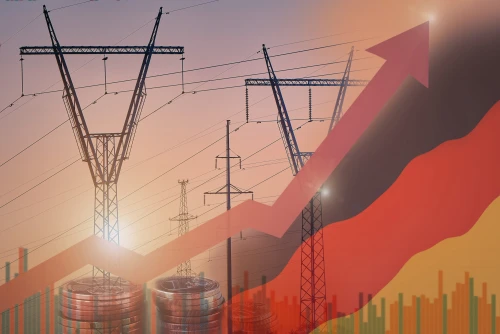
April 25th, 2025
Join our Italian Energy Day on 20 May – Book now
The EU Renewable Energy Directive sets ambitious targets for renewable energy use and carbon reduction across Europe. Discover how this policy impacts industries, drives sustainability, and shapes the future of clean energy.

The European Union has a long history of attempting to reduce carbon emissions, with early initiatives such as the 1991 first feed-in tariff from Germany. The first concrete renewable increase target came in 1997, with a promise to increase renewables by 2010 and the first directive for energy production being drafted in 2001. The most modern iteration of these carbon reduction targets comes in the form of the Renewable Energy Directive.
The Renewable Energy Directive addresses environmental, energy and climate challenges in Europe, with an aim to reduce the amount of carbon emissions created by member countries of the European Union.
The first Renewable Energy Directive was adopted in 2009, with targets of gross energy consumption of the EU to be procured from renewable energy sources at a rate of 20%, while 10% of transport energy consumption to be procured from renewable sources by 2020.
In 2018, the 'Clean Energy for Europeans' package was introduced, prompting a revision of the Renewable Energy Directive, which increased the gross energy consumption target to 32% and the transport energy target to 14% by 2030.
November 2023 raised these targets to 42.5% by 2030, while approval times for new renewable plants were reduced. RED III is the most current iteration of the Renewable Energy Directive
The Renewable Energy Directive III is the most current iteration of the Renewable Energy Directive since it was first introduced in 2009. We take a look at what targets have been put in place as part of Renewable Energy Directive III and the proposed dates that they need to be fulfilled.
In November 2023, renewable targets were raised to 42.5% by 2030. Grants were made available, and approval times for new renewable plants were reduced to help reduce bottlenecks and get new renewable plants up and running.
Renewable Energy Directive will become law on May 21 2025, though some elements must be uptake by July 1 2024.
The production of the European Union's energy and the use of energy are responsible for more than 75% of its greenhouse gas emissions, the reduction of this energy system is extremely important in the reduction of overall greenhouse gases.
Guarantees of Origin (GOs) were strongly encouraged to use timing stamps.
Power purchase agreements (PPAs) were prioritised, making them easier for businesses and renewable power producers to adopt.
By May 21 2025, all elements for the Renewable Energy Directive must be implemented. But how will member states do this? We take a look at the different methods they may implement to reach this target and how this may affect their local industry.
The Renewable Energy Directive certainly influences member states' energy policies and strategies. The directive details that all member states should eradicate roadblocks to PPA adoption, and better frameworks should be established for those businesses and renewable projects wanting to enter them. European Union PPAs and GOs should be linked, and the use of renewable energy contracts encouraged.
Cross-border cooperation means that joint projects are being encouraged and prioritised, allowing member states to collaborate on renewable energy projects, including production, transportation and renewable plant production industries. This is turn will stabilise what's hoped to become a European Grid.
The Renewable Energy Directive encourages community engagement on a consumption and production basis to help put the onus back on the local community to champion and manage renewable energy.
Related article: 4 examples of successful carbon reduction plans
The transition to renewable energy is essential for combating climate change, but the implementation of the EU's Renewable Energy Directive faces several challenges. These challenges are primarily regulatory and financial, requiring significant effort from member states to overcome them. However, alongside these hurdles lie opportunities for growth, innovation, and sustainability.
The European Green Deal, launched with a goal of achieving net-zero emissions by 2050, has dismantled some regulatory barriers. This initiative supports the EU Renewable Energy Directive's alignment with the Paris Agreement, aiming to reduce pollution and protect ecosystems. Despite this progress, regulatory roadblocks persist, especially regarding the approval and financing of renewable energy projects.
The financial challenges are significant as renewable energy infrastructure, such as power plants and distribution networks, require substantial investment. Access to financing remains one of the biggest obstacles to meeting the ambitious targets set by the directive.
Despite the challenges, there are numerous opportunities in the green energy transition. The EU Renewable Energy Directive promotes technology neutrality, encouraging innovation across member states. By 2030, the directive targets 5% of newly installed energy capacity to come from innovative technologies. This focus on diverse renewable energy options allows countries to tailor their approach based on specific needs.
Investment in renewable energy not only supports environmental goals but also stimulates economic growth, creating jobs and fostering technological advancements in solar, wind, and bioenergy sectors.
Looking ahead, revisions to the Energy Taxation Directive (2003/96/EC), introduced in 2021, aim to update the taxation of energy products in line with climate policies. The goal is to move away from fossil fuel dependence and promote cleaner energy sources. This proposal is currently being reviewed by the European Parliament and the Council of the EU, indicating the potential for further policy evolution in support of renewable energy.
The EU Renewable Energy Directive is a critical tool for reducing carbon emissions and driving sustainable energy use. While it faces significant regulatory and financial challenges, the opportunities for innovation, investment, and economic growth are immense. As the directive evolves, it will continue to shape the future of renewable energy in Europe, driving progress toward a more sustainable and environmentally friendly energy system.
We can help you calculate your carbon footprint and implement an informed carbon reduction plan.

April 25th, 2025

April 24th, 2025

April 23rd, 2025